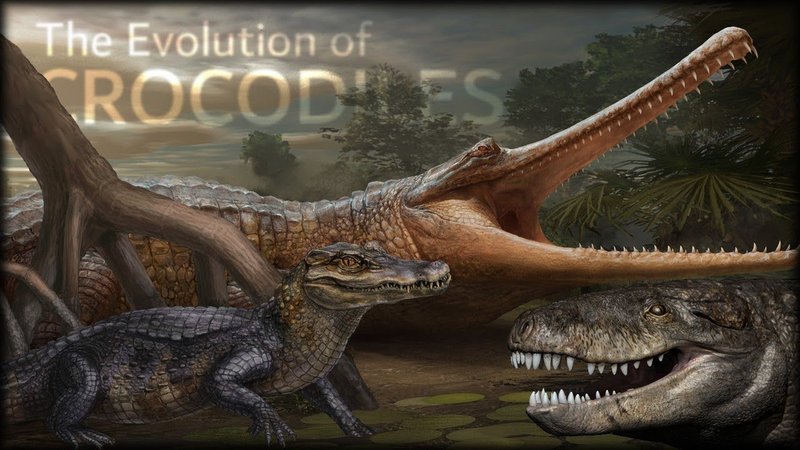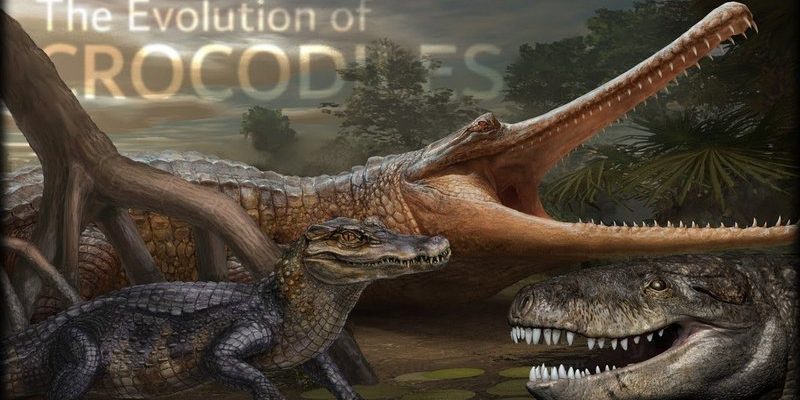
Imagine standing in a time machine as it zips back through the ages, revealing the secrets of these fascinating creatures. It’s hard to believe that today’s crocodiles share a common ancestor with dinosaurs. To understand how we got from there to here, let’s dive into the evolutionary history of the crocodile.
Origins: The Ancestry of Crocodiles
Crocodiles belong to a group of reptiles called *Archosaurs*, which means “ruling lizards.” This group also includes birds and the long-gone dinosaurs. The story kicks off over 250 million years ago when the ancestors of crocodiles began to emerge. These early reptiles were quite different from what we see today; they had unique features and adaptive traits that helped them thrive in a variety of environments.
During the Triassic period, around 230 million years ago, the first true crocodilians appeared. These creatures were small, agile, and likely spent more time on land than in water. Some even walked on their two hind legs, resembling the dinosaurs that would follow. This flexibility allowed them to adapt to changing environments, and it’s a key theme in their evolutionary journey.
As epochs passed, these ancient reptiles evolved into various forms. Some became more aquatic, transitioning into the semi-aquatic lifestyle we see in crocodiles today. It’s like watching a family of travelers adapt their journey based on the landscapes they encounter, always finding ways to thrive, whether they’re on land or in water.
Age of Dinosaurs: Crocodiles Among Giants
During the Mesozoic era, a time dominated by dinosaurs, crocodilians flourished as they adapted to numerous habitats. You might wonder if they competed with the dinosaurs. Well, yes and no. While dinosaurs roamed the land, crocodilians thrived in the waters and wetlands, evolving into various forms to fill ecological niches.
Some crocodilians, like *Deinosuchus*, grew to enormous sizes, possibly exceeding 30 feet in length. These giant predators likely fed on juvenile dinosaurs or any unfortunate creature that wandered too close to the water. Picture a massive water-dwelling beast silently gliding through the murky depths, ready to ambush its next meal—nature at its rawest.
It’s fascinating to note that while most dinosaur species went extinct about 65 million years ago, crocodilians survived. They had adapted so well to their environments that they could weather the storm that wiped out many other species, acting like the resilient travelers who manage to navigate through a treacherous journey.
Evolutionary Adaptations: How Crocodiles Survived
Crocodiles possess several adaptations that have helped them survive throughout the ages. One of their key traits is a *powerful bite*. Their jaws are equipped with strong muscles, allowing them to grasp and hold onto prey with incredible force. Think of a crocodile’s bite as a specialized tool, finely tuned for catching and devouring various animals.
Another remarkable feature is their skin. Covered in tough scales, crocs have built-in armor that not only protects them but also helps them blend into their environments. Imagine wearing a camouflage suit that allows you to hide perfectly in the foliage; that’s what a crocodile does when lying in wait for prey.
Their unique respiratory system is also worth noting. Crocodiles can hold their breath underwater for extended periods, allowing them to remain hidden as they stalk their prey. This ability is a game-changer in the wild and contributes to their success as apex predators. It’s like having a secret weapon that gives them the upper hand in the aquatic landscape.
The Role of Climate Change in Crocodile Evolution
As climates changed over millions of years, crocodiles adapted to new environments, showcasing their impressive resilience. During the Cenozoic era, around 66 million years ago, many continents began shifting. This tectonic activity led to the formation of new habitats and the extinction of some species while paving the way for others.
For instance, as the planet cooled, many crocodilian species adapted to temperate regions while some remained in tropical climates. This adaptability is like a skilled traveler adjusting their route based on weather conditions—ensuring they reach their destination despite the obstacles.
Throughout these changes, some species went extinct while others evolved into modern breeds. Today, there are around 15 recognized species of true crocodiles, ranging from the American crocodile to the more elusive Philippine crocodile. Each of these species showcases unique characteristics suited to their environments, revealing how they have continued to evolve in the face of challenges.
Modern-Day Crocodiles: A Living Connection to the Past
Today’s crocodiles are a living testament to their long evolutionary history. They’ve remained surprisingly unchanged over millions of years, leading some scientists to label them as “living fossils.” This title reflects how they’ve retained many traits of their ancestors while still displaying adaptations that allow them to thrive in modern ecosystems.
Despite being ancient creatures, crocodiles are highly effective predators. Their hunting techniques are a mix of stealth and speed, making them formidable hunters. Imagine an expert ambush predator lying still in the water, ready to strike with lightning speed—that’s the beauty of a crocodile in action.
However, these incredible creatures also face new challenges. Habitat loss, climate change, and pollution are stark reminders of the modern world’s impact on wildlife. The crocodile’s evolutionary success story is now intertwined with our responsibility to help protect their habitats. It’s a call to action to preserve the delicate balance of the ecosystems they inhabit.
Understanding the evolutionary history of crocodiles isn’t just about tracing their lineage; it’s about recognizing their importance in our world. These remarkable reptiles share a deep connection to our planet’s past, reflecting the resilience and adaptability of life forms over millions of years. As we learn more about these ancient predators, we’re reminded of our role in their future.
Ultimately, crocodiles teach us valuable lessons about survival and adaptation. Now, more than ever, we’d benefit from applying these lessons to our own lives and the environments we inhabit. Let’s commit to protecting these incredible animals and their habitats for generations to come. After all, they’ve been around for so long; it would be a shame to lose them now.

